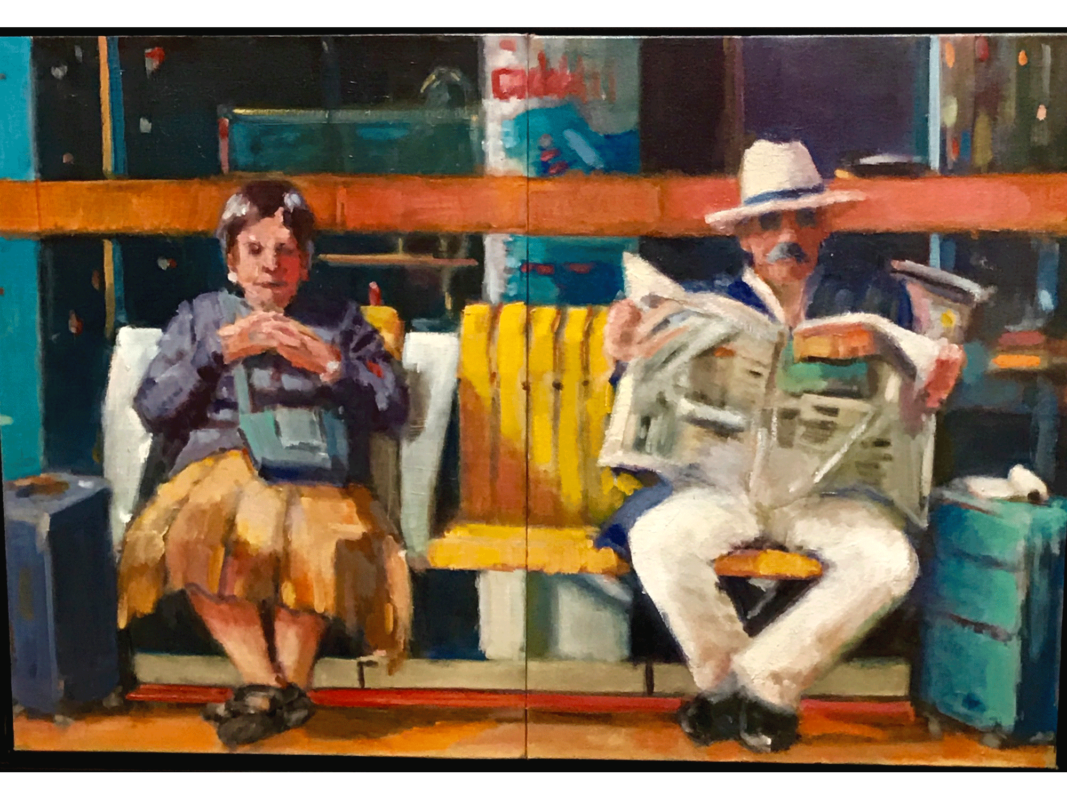
“Eve and Adam,” Shelley Lowenstein, 2019, oil on panels, 17” x 26” (diptych)
Washingtonian Shelley Lowenstein places “life” before “earth” in her oil-on-canvas diptych that underscores the continuous time-bridge between the primordial humans and ourselves. Reading the work from left to right—as an American diptych, rather than as if in the Hebrew text, from right to left—her “Eve and Adam” presents a relaxed, no doubt retired couple, sitting on a bench in some sunny clime. Sitting together yet not together; on the contrary, each in his or her own space and in his or her own world. He sits alone on a love-seat-sized bench, with an empty space next to him, and she sits on a separate chair; her hands are folded on her purse, thinking—dreaming, perhaps?—and his hands hold the newspaper in which he is immersed. They are fundamentally separate—aside from the technical fact that each is a separate image but joined visually and conceptually by the artist—yet they form one continuous image by means of that artistic decision, connected to each other and, by the title of the work, to their primordial ancestors.
Those ancestors may have been “bone of my bone and flesh of my flesh” but when God asked about what they had been up to and Adam, knowing that he had ignored God’s explicit commandment, blamed Eve, and she in turn blamed the serpent, they could hardly have been more separate from each other. The first moment of human existential aloneness spilled with them out of the Garden into exile. That sense of aloneness in another person’s company spills all the way forward, too, and into the image before us. What they most obviously share in common besides what one might presume about their age and the sun gently bathing them both is that, sitting by each of them is a suitcase on wheels. Perhaps they are waiting for a bus that will take them away—and thus, from a different angle, connected to their namesakes: what obligations, one might wonder, is driving them away from the easygoing, paradise-like place in which they are so relaxed? This is an expanding moment of aloneness just before the exile.
Shelley Moskowitz Lowenstein (aka Mosklow) is a keen observer of people and places. She has a passion for capturing moments in time, especially scenes of people engaged in the casual interactions that course through everyday life. She focuses on gesture and body language, and delights in exploring the relationships between her figures–how they look at one another, how they stand or sit in relation to one another–incorporating all these impressions onto the canvas. Using the interplay of light and shadow, she paints scenes that hit the pause button on the hustle of everyday life. In short, she paints stories. Check out Shelley’s profile on artavita.com.

